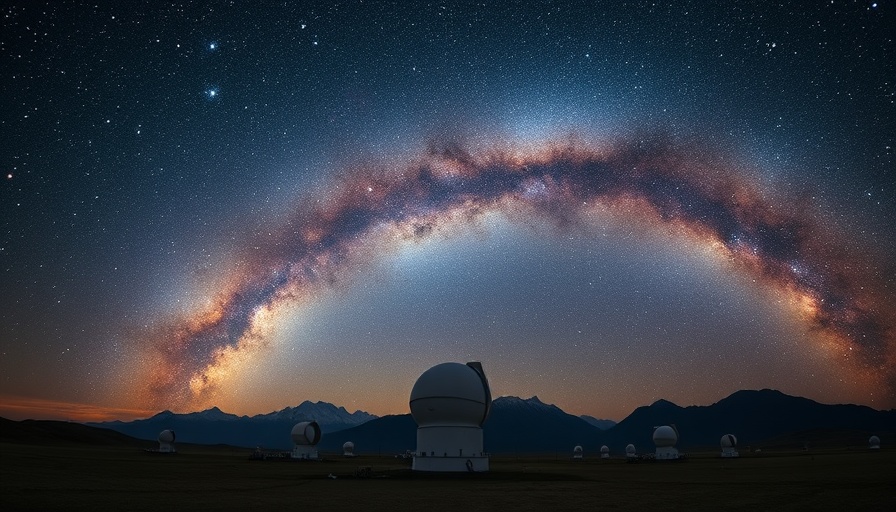
The Threat to Dark Skies Above Chile's Atacama Desert
The Atacama Desert in Chile is often heralded as one of the best places on Earth for astronomical observations, due to its pristine dark skies and dry conditions. Home to the European Southern Observatory's (ESO) Very Large Telescope (VLT), this region significantly contributes to our understanding of the cosmos. However, the proposed construction of a new green hydrogen production facility, known as INNA, threatens to alter this landscape forever. A recent study indicates that the night sky above the VLT could experience brightness increases of up to 35%, significantly compromising the quality of scientific observations.
Understanding the Implications of Light Pollution
Light pollution—a byproduct of urbanization and technological advancement—poses a serious risk to astronomy. The study released by ESO highlights the stark difference between AES Energy's prior claims of minimal impact and the potential reality. With the VLT's location at just under seven miles from the proposed facility, the proximity ensures that any increase in light pollution will directly affect its capability to observe distant galaxies and exoplanets. Andreas Kaufer, ESO's Director of Operations, emphasized that their calculations assume plans for advanced lighting technology that are still unverified. This uncertainty raises concerns about underestimating the true impact of the INNA project.
The Scientific Value of Dark Skies
The importance of dark skies cannot be understated in astrophysics. The VLT, which comprises four powerful telescopes, is essential for groundbreaking discoveries, including the first-ever image of an exoplanet. If the INNA project proceeds, scientists fear that the ability to conduct cutting-edge research could be hindered drastically. The vibrant glow of light pollution not only impacts the current scientific output but also stifles future innovations in space exploration.
A Battle Between Green Energy and Astronomy
This situation presents a complex dilemma: the push for renewable energy juxtaposed with the critical need for astronomical research. The objective of producing green hydrogen is noble and essential for combating climate change; however, the specific placement of energy facilities must consider their broader environmental impacts. As Itziar de Gregorio-Monsalvo from ESO pointed out, projects like INNA "steal our shared view of the universe," raising ethical questions about the balance between sustainability and scientific preservation.
What Can Be Done?
The conflicting interests of maintaining dark skies for scientific discovery and advancing renewable energy solutions highlight the need for more rigorous assessments of such developments. Stakeholders can advocate for improved regulations regarding the placement of energy facilities, ensuring they do not encroach on sensitive astronomical sites. Community engagement and public awareness will also play crucial roles in determining the fate of the INNA project and similar operations in the future.
The Bigger Picture: The Global Context of Light Pollution
Globally, light pollution has become a pressing issue not just for astronomers but for wildlife that depend on natural darkness for their survival. Similar projects worldwide have prompted scientists to engage in advocacy efforts to protect existing dark sky sites. This becomes even more important as we move towards an increasingly technologically dependent future where the balance between innovation and preservation must be carefully navigated.
In conclusion, while the pursuit of renewable energy is crucial for our planet’s health, it must not come at the cost of our understanding of the cosmos. The potential increase in light pollution from the INNA facility in the Atacama Desert serves as a call to action not just for astronomers, but for anyone passionate about preserving both our environment and the mysteries of the universe. It is essential to advocate for solutions that reconcile energy needs with scientific integrity, ensuring that future generations can continue to gaze into the night sky.
 Add Row
Add Row  Add
Add 




Write A Comment